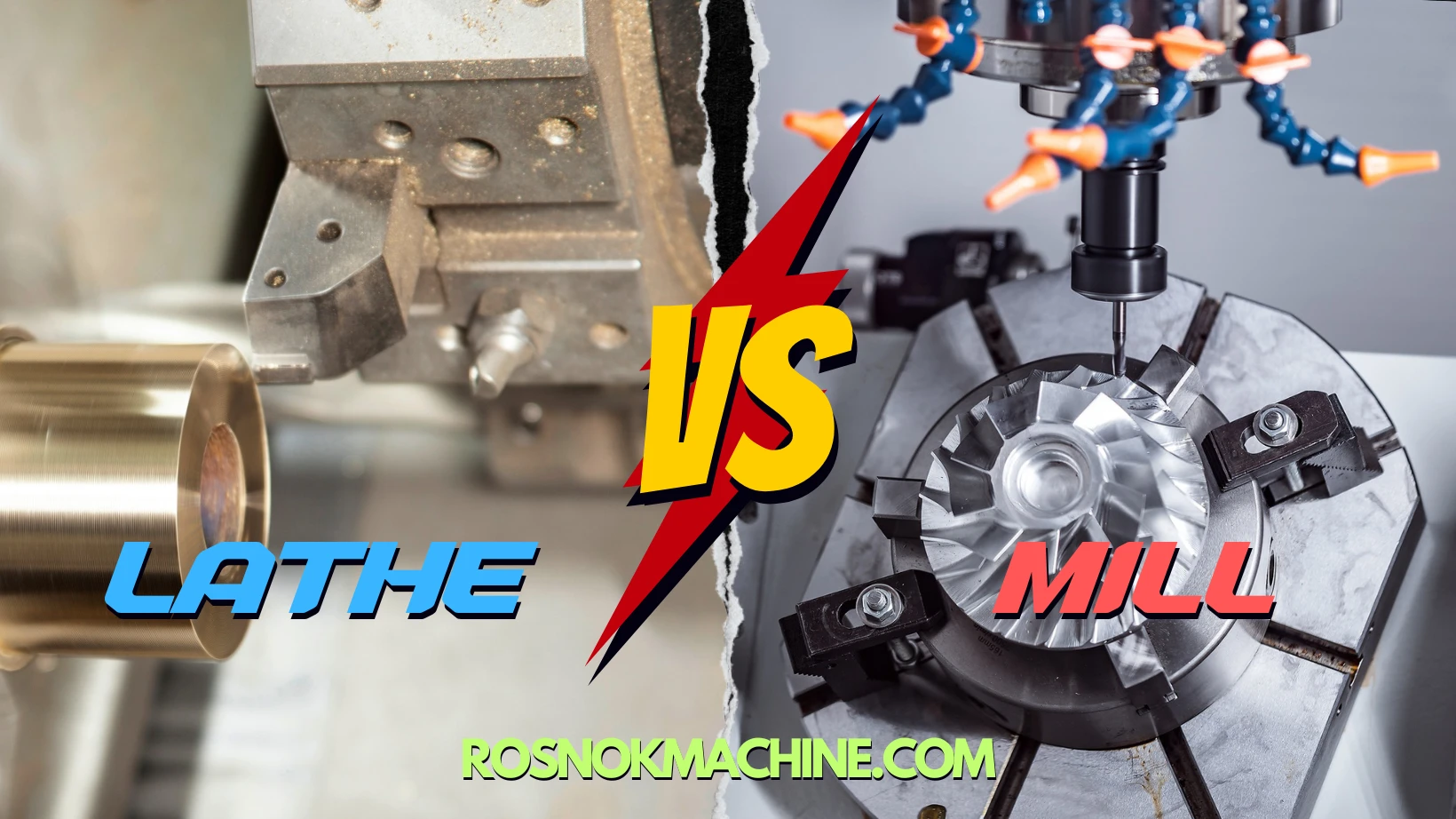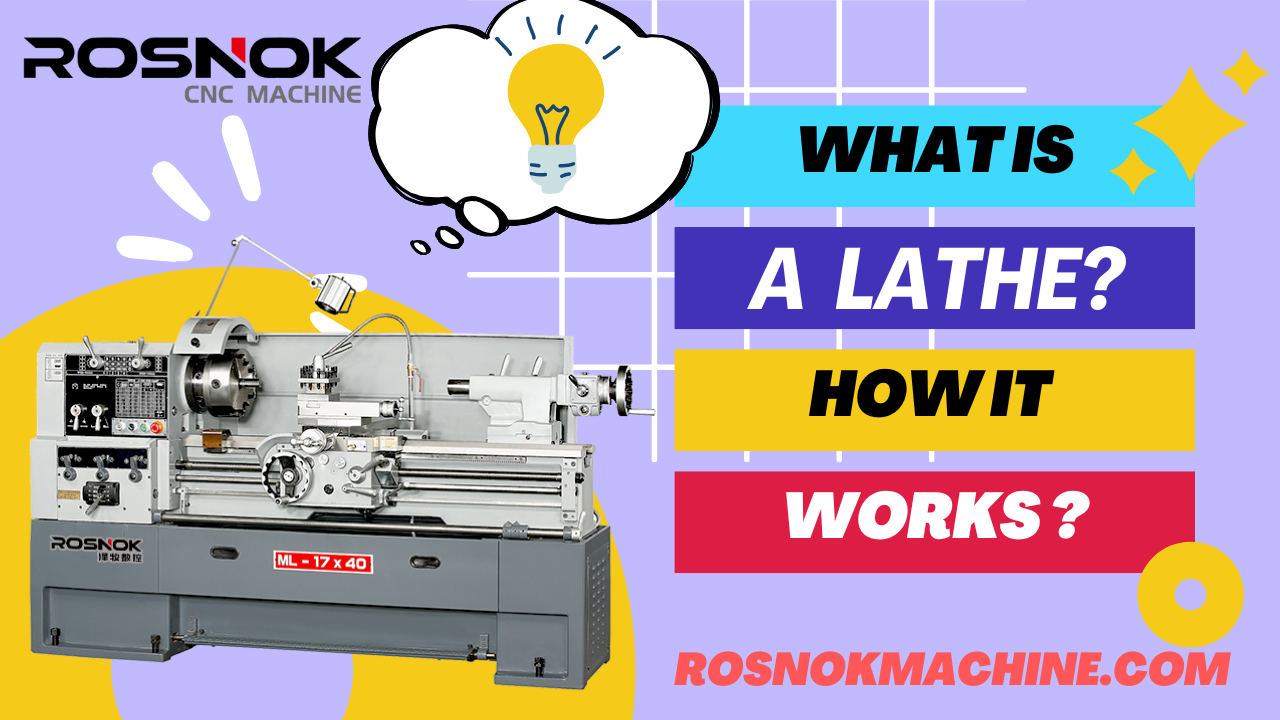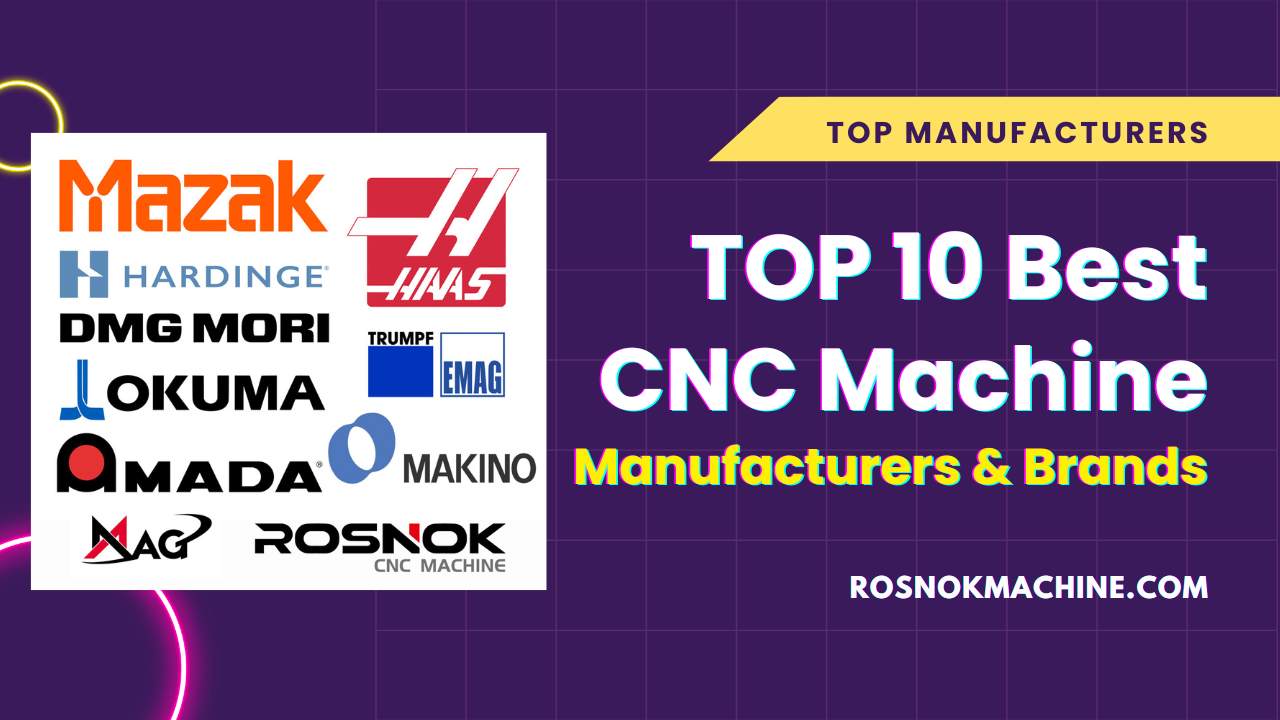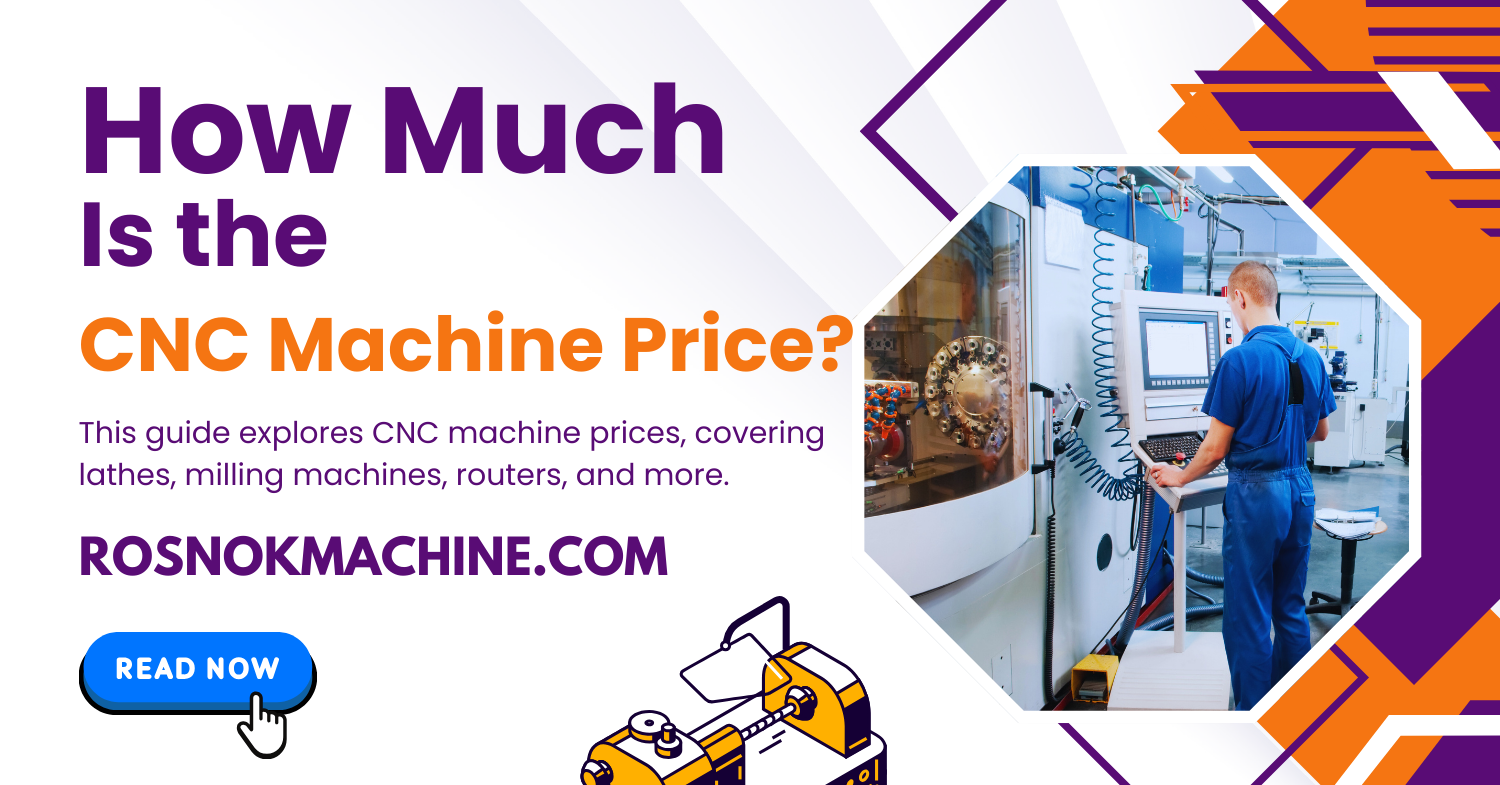Have you ever wondered what manufacturing really is? What turns steel into cars, sand into smartphones, and raw ideas into real products? Why do some companies thrive on efficient production while others fall behind? And how does this one concept—manufacturing—quietly shape our economy, industries, and daily lives?
Manufacturing is the industrial process of converting raw materials into finished products using labor, machinery, tools, and technology. It spans methods such as machining, molding, assembly, and 3D printing. As a backbone of modern industry, manufacturing fuels key sectors like automotive, aerospace, medical, and electronics—creating not just goods, but economic growth, skilled jobs, and innovation worldwide.
In this article, we’ll explore the full scope of manufacturing—its history, processes, types, and strategies—while uncovering how it adds lasting value across every corner of modern industry.
What is Manufacturing?
Manufacturing is the process by which raw materials are transformed into tangible products through a combination of labor, machinery, and organized systems. This transformation isn’t random or improvised — it follows a structured, often automated sequence of steps designed to deliver consistency, efficiency, and scalability. Whether producing precision parts for aerospace, components for electric vehicles, or casings for medical devices, manufacturing is what makes industrial ideas physically real.
A key distinction in understanding manufacturing lies in its focus on physical conversion. Unlike broader terms such as production or operations, which can include services and intangibles, manufacturing deals specifically with the mechanical or chemical transformation of materials. This distinction is especially important in industrial contexts, where tolerances, repeatability, and throughput are central performance metrics.
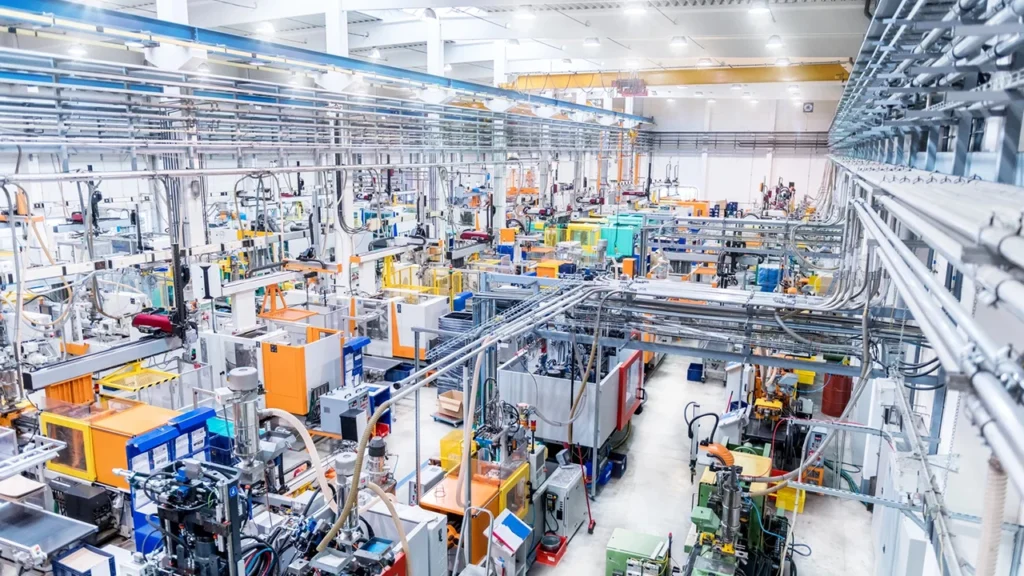
Modern manufacturing extends far beyond traditional assembly lines. Today, it encompasses a wide variety of techniques, from high-speed machining and automated welding to molding, forming, and additive processes like 3D printing. These methods are selected based on the complexity of the product, required precision, and material properties. In many cases, these processes are part of a larger manufacturing system — integrated with digital controls, quality management tools, and supply chain coordination.
It’s also important to understand the role of the manufacturer. More than just an equipment operator, a manufacturer designs and manages the full production environment — aligning engineering plans with process execution. This includes choosing the appropriate method, sequencing operations, ensuring quality, and adapting to customer or industry-specific standards. Manufacturers may operate at vastly different scales, from small-batch custom fabrication shops to large industrial plants running continuous production lines.
Ultimately, manufacturing is not just about making products — it’s about doing so in a way that is repeatable, measurable, and economically viable. In today’s economy, where product complexity is rising and customer expectations are higher than ever, manufacturing is the link that turns engineering into delivery — reliably, at scale, and with precision.
The Evolution of Manufacturing
Manufacturing has never been static—it evolves alongside human progress, adapting to new tools, energy sources, and technologies. From the earliest handmade goods to today’s interconnected smart factories, the journey of manufacturing reflects how societies organize labor, scale production, and increase efficiency. Understanding this historical development provides important context for modern manufacturing methods, strategies, and systems. Each phase in its evolution—from manual craftsmanship to digital automation—has shaped not only how goods are made, but how industries compete and economies grow.
Craftsmanship and Manual Production
Long before factories and automation, manufacturing began as manual craftsmanship. Early humans shaped stone tools, forged metals, and wove textiles entirely by hand. These production systems were small-scale, relying on the artisan’s skill rather than formal processes. There was little consistency or volume, and each product was essentially one-of-a-kind. This type of manufacturing served local economies but lacked scalability, standardization, or productivity optimization.
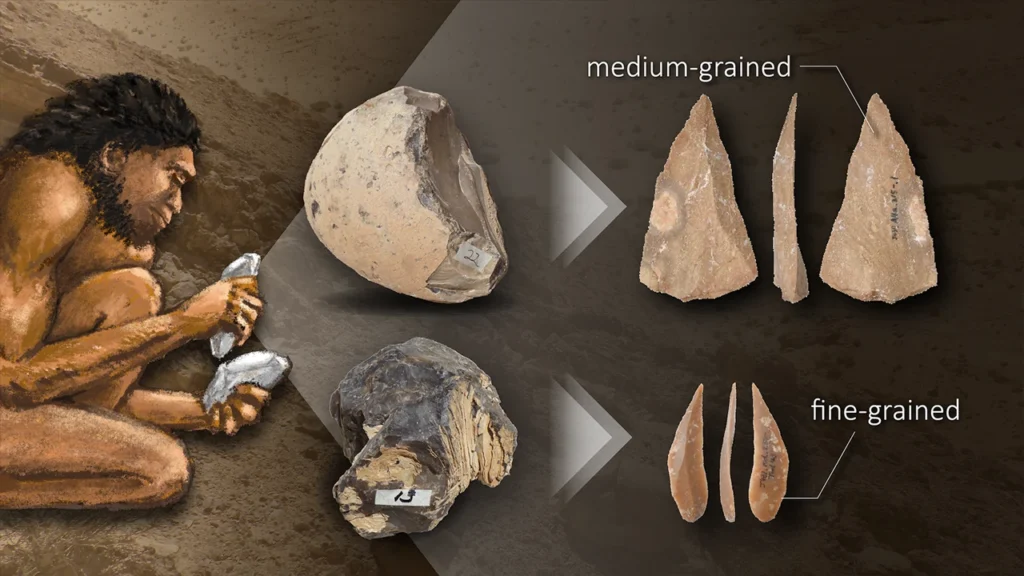
Mechanization and the First Industrial Revolution
The late 18th century marked the birth of industrialized manufacturing with the First Industrial Revolution. Steam power and water wheels enabled machines to take over labor-intensive tasks. Mechanized looms, spinning frames, and metal presses reduced reliance on manual work and increased output dramatically. The concept of the factory system emerged—centralized locations where materials, workers, and machines operated under a unified process flow. This shift introduced the first true manufacturing plants, laying the foundation for industrial growth and modern supply chains.
The Assembly Line and Mass Production
In the early 20th century, the Second Industrial Revolution introduced electricity and more flexible factory layouts. Most notably, Henry Ford’s moving assembly line in 1913 revolutionized how products were built. Using standardized parts and a linear workflow, manufacturing became faster, cheaper, and repeatable at scale. This era saw the rise of mass production and large industrial operations focused on output volume, consistency, and cost efficiency. It also formalized the role of process engineering and industrial management within manufacturing organizations.
The Rise of Automation and CNC Technology
By the mid-1900s, the push for precision and productivity brought automation to the factory floor. The introduction of electrical controls, programmable logic controllers (PLCs), and the first CNC machines marked a shift toward programmable production systems. With CNC, tasks like drilling, turning, and milling became digitally controlled, reducing human error and increasing dimensional accuracy. This was a game-changer for industries like aerospace and automotive, where tolerances are critical. Manufacturers could now automate not just motion, but intelligence—embedding logic into how products were made.
Digital Manufacturing and Industry 4.0
Today’s manufacturing landscape is defined by connectivity, data, and smart technologies. Often referred to as Industry 4.0, this phase involves cloud-based manufacturing platforms, AI-driven process optimization, and real-time data exchange between machines and systems. Digital manufacturing environments use sensors, predictive maintenance algorithms, and digital twins to anticipate failures and optimize production without disruption. Rather than reacting to problems, modern manufacturers predict and prevent them—boosting efficiency, reducing waste, and enabling customization at scale.
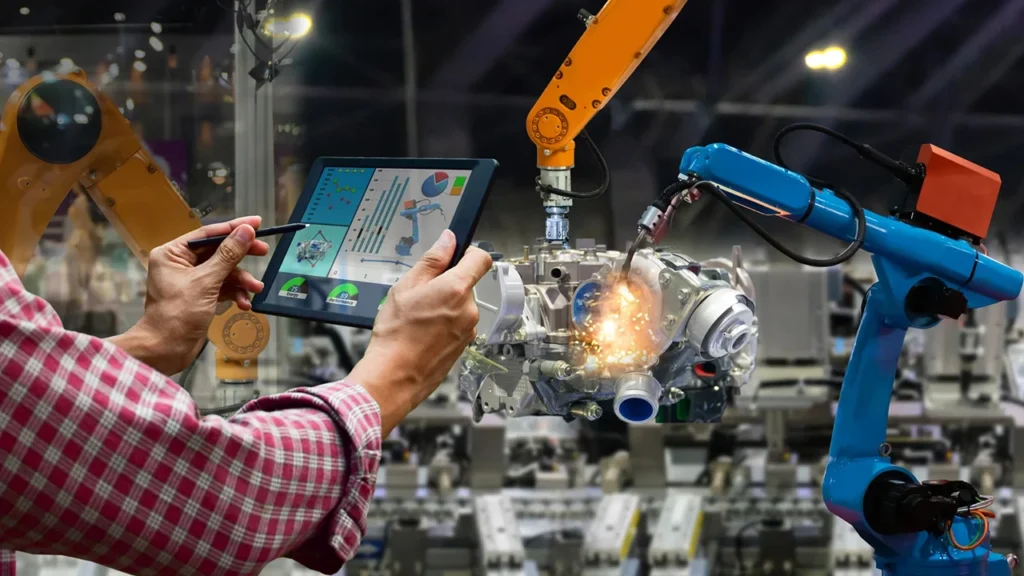
Types of Manufacturing Processes
Modern manufacturing is not a one-size-fits-all system. Depending on the product, volume, materials, and customer requirements, companies apply different types of production processes to achieve the desired outcome. Understanding these categories is essential for evaluating efficiency, scalability, and technological fit within a manufacturing operation.
Each process type plays a unique role in today’s industrial landscape and is chosen based on specific application demands. Below are the five main types of manufacturing processes used across industries.
Discrete Manufacturing
Discrete manufacturing is used to produce identifiable items in defined quantities, where each unit can be individually tracked and handled. Unlike continuous systems, it operates in production runs—allowing for changeovers between different product types. Items are often assembled from various components using machining, welding, or bolting, and the final output can be easily disassembled or modified. This process suits industries where product customization, traceability, and part-level control are essential. Production can be either manual or automated, depending on scale and complexity.
Advantages
- High product variety and flexibility
- Easier to customize based on customer needs
- Suitable for moderate production volumes without continuous lines
Disadvantages
- Lower efficiency compared to continuous systems
- Setup and changeover times can affect productivity
- Inventory and scheduling require tight coordination
Applications
- CNC-machined parts for the automotive and aerospace industries
- Industrial equipment assemblies
- Electronic devices with varied specifications
Process Manufacturing
Process manufacturing involves combining raw materials through chemical, thermal, or mechanical processes to create products that cannot be broken back into their original components. Unlike discrete manufacturing, this method produces goods in bulk—either in continuous flow or batch operations. The focus is on formulation rather than assembly, and the output is usually measured by volume, weight, or time. Maintaining consistent quality requires tight control over variables like temperature, pressure, and mixing ratios. This method is widely used in industries where precision recipes and regulatory compliance are essential.
Advantages
- High output consistency
- Ideal for large-scale, continuous production
- Easier to automate and control with minimal variation
Disadvantages
- Not suitable for individualized products
- Complex to switch between product types
- Heavy dependence on environmental control (e.g., pressure, temperature)
Applications
- Pharmaceutical compounds and chemical production
- Paints, adhesives, and coatings
- Beverages and processed foods
Job Shop Manufacturing
Job shop manufacturing is designed for low-volume, high-customization production, where each product or component is often unique. Unlike assembly lines, job shops are organized by process rather than product, with workstations grouped by function—such as cutting, drilling, or finishing. Orders are typically built to customer specification, and production routes vary from item to item. This structure supports flexibility but demands careful scheduling and skilled labor. It’s ideal for industries where precision and adaptability are more important than speed or scale.
Advantages
- Excellent for unique or custom-made parts
- High precision and attention to detail
- Adaptable to different product designs without major retooling
Disadvantages
- Expensive per unit due to labor intensity
- Slower production speed
- Requires skilled workers and strong planning systems
Applications
- Aerospace brackets and instrumentation housings
- Medical implants and custom surgical components
- Prototype parts using Swiss-type CNC lathes

Repetitive Manufacturing
Repetitive manufacturing is used when the same or very similar products are produced over an extended period, often on an assembly line. Unlike discrete manufacturing, this process minimizes variability and maximizes efficiency through continuous or semi-continuous workflows. Equipment is typically set up once and rarely adjusted, making it ideal for standardized components with high demand. Automation and robotics play a central role, ensuring high output with consistent quality. This method excels when cost per unit and throughput are prioritized over customization.
Advantages
- High-volume output with low per-unit cost
- Predictable workflow and efficient scheduling
- Optimal for automation and minimal human error
Disadvantages
- Limited flexibility for product changes
- High initial investment in equipment and layout
- Less responsive to shifting market demands
Applications
- Consumer electronics (e.g., smartphones, appliances)
- Engine parts and drivetrain components
- HVAC systems and standardized industrial parts
Additive Manufacturing
Additive manufacturing, commonly known as 3D printing, fabricates components layer by layer from digital designs. Unlike subtractive methods, which remove material from a solid block, additive processes build geometry from the ground up—often using polymers, metal powders, or resins. This approach allows for intricate internal structures, lightweight designs, and near-zero waste. Initially used for rapid prototyping, additive manufacturing has evolved into a viable option for end-use parts in high-performance industries. Its flexibility makes it particularly valuable in design-driven or low-volume, high-value applications.
Advantages
- Minimal material waste compared to traditional processes
- Allows for complex geometries and internal features
- Ideal for design iteration, prototyping, and customization
Disadvantages
- Slower for large-scale production
- Material options are more limited, especially for structural metals
- Often requires post-processing for surface finish or mechanical properties
Applications
- Custom orthopedic implants and dental devices
- Lightweight aerospace brackets and cooling ducts
- On-demand tooling, jigs, and CNC fixtures
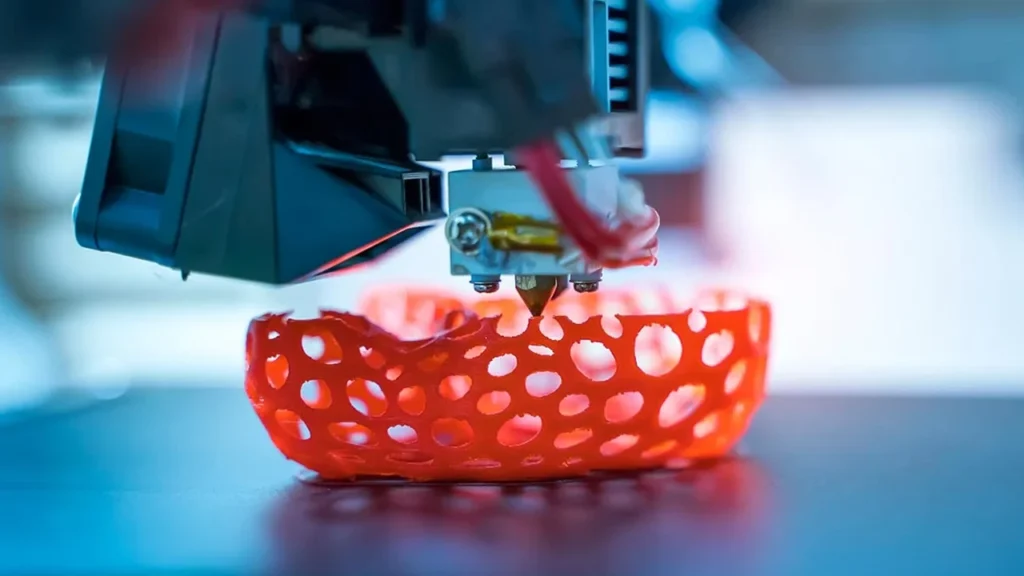
Core Manufacturing Methods Explained
Manufacturing processes are powered by a variety of physical techniques that convert raw materials into finished products. These core manufacturing methods differ not only by what they produce, but by how they manipulate material—through cutting, shaping, joining, or building. Understanding these methods helps manufacturers select the right approach based on tolerance requirements, volume, material type, and production time.
Each method contributes uniquely to the larger manufacturing process, and choosing the correct one directly affects cost, quality, and product performance.
Machining
Machining is a subtractive manufacturing method that removes material from a workpiece using cutting tools. Common forms include milling, turning, drilling, and grinding. Machining is favored for applications where precision, tight tolerances, and surface finish are critical. It is widely used with metals, plastics, and composites.
Advantages
- High precision and dimensional accuracy
- Suitable for complex geometries and internal features
- Broad material compatibility
Disadvantages
- Generates material waste
- Tool wear and maintenance increase operating costs
- Often slower than forming or molding for high volumes
Applications
- CNC-machined aerospace brackets
- Engine components and hydraulic fittings
- Custom molds and dies for injection processes
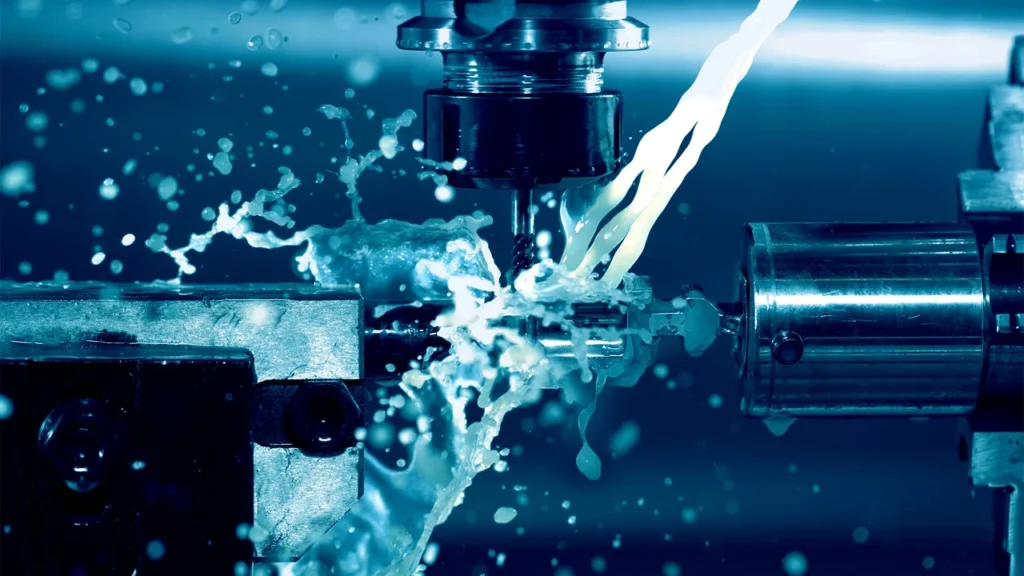
Molding & Casting
Molding and casting shape materials by introducing liquid or pliable raw material into a mold cavity, where it hardens into the desired shape. Molding is often used with plastics (injection molding), while casting is common for metals (die casting, sand casting). These methods excel at producing high volumes of identical parts.
Advantages
- Economical for mass production
- Excellent for complex shapes and surface textures
- Minimal post-processing for finished geometry
Disadvantages
- High upfront cost for tooling
- Limited flexibility once molds are set
- Shrinkage or porosity defects may occur in casting
Applications
- Automotive dashboards and plastic enclosures
- Cast iron pump housings
- Electrical connectors and packaging components
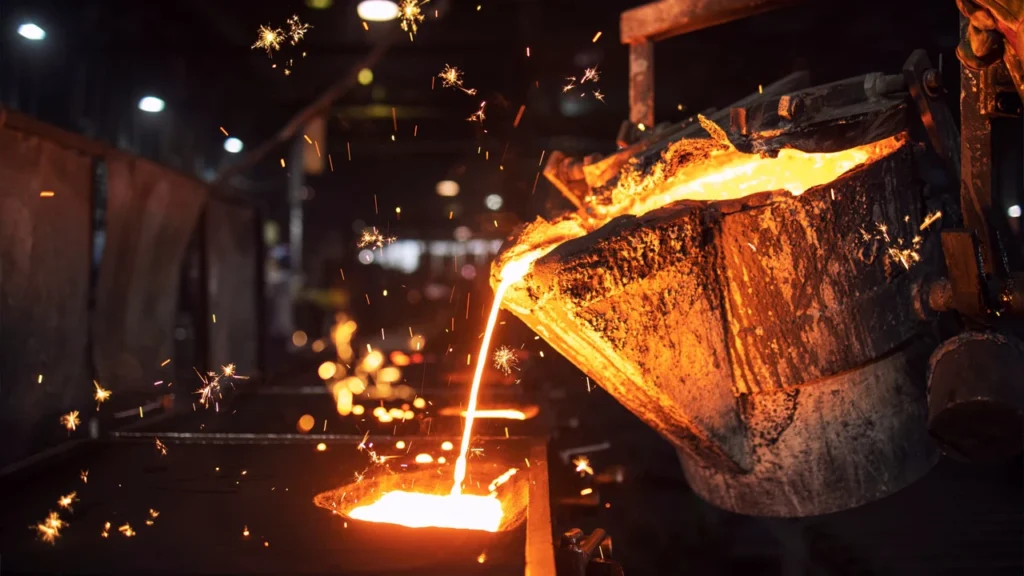
Joining (Welding, Fastening)
Joining methods connect two or more parts into a single assembly. Techniques include welding (fusion-based), brazing, adhesives, and mechanical fastening (bolts, screws, rivets). These methods are essential when components must be combined without reprocessing the whole.
Advantages
- Enables modular product design
- Suitable for structural integrity and load-bearing parts
- Variety of options for temporary or permanent joints
Disadvantages
- Joint integrity may vary under stress or thermal cycling
- Adds complexity to disassembly or recycling
- Surface preparation and alignment critical for strength
Applications
- Chassis assembly in automotive manufacturing
- Aerospace fuselage sections
- Metal furniture and structural framing
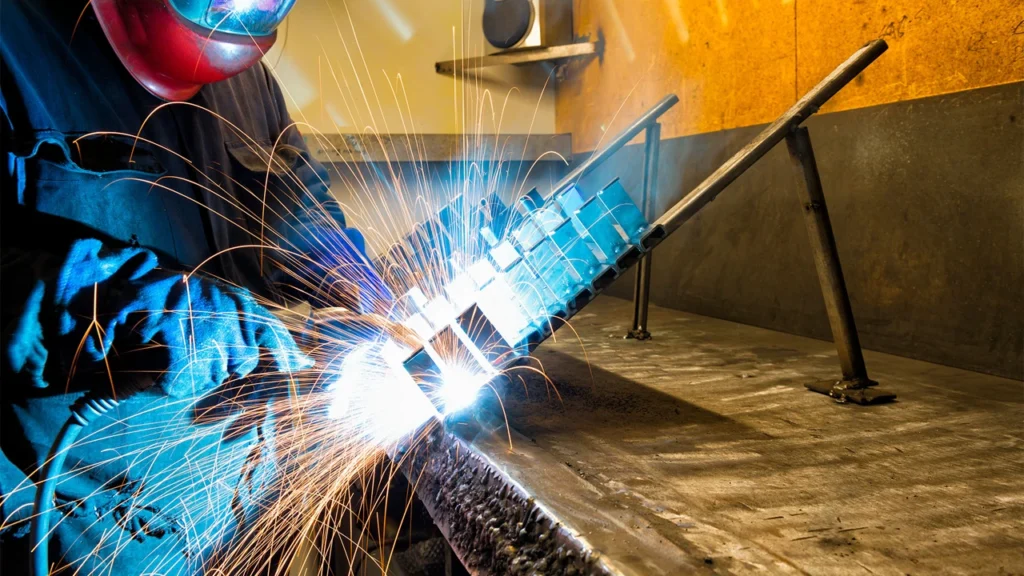
Forming & Shaping
Forming processes reshape material using mechanical force, without adding or removing material. Common examples include forging, stamping, bending, rolling, and extrusion. These are efficient methods for shaping metals and creating strong, continuous parts.
Advantages
- High-speed and efficient for mass production
- Excellent material strength due to grain flow alignment
- Minimal material waste
Disadvantages
- Limited to ductile materials
- Tooling and dies can be expensive
- Not suitable for highly complex geometries
Applications
- Rolled steel beams and aluminum extrusions
- Forged crankshafts and connecting rods
- Stamped metal panels for appliances
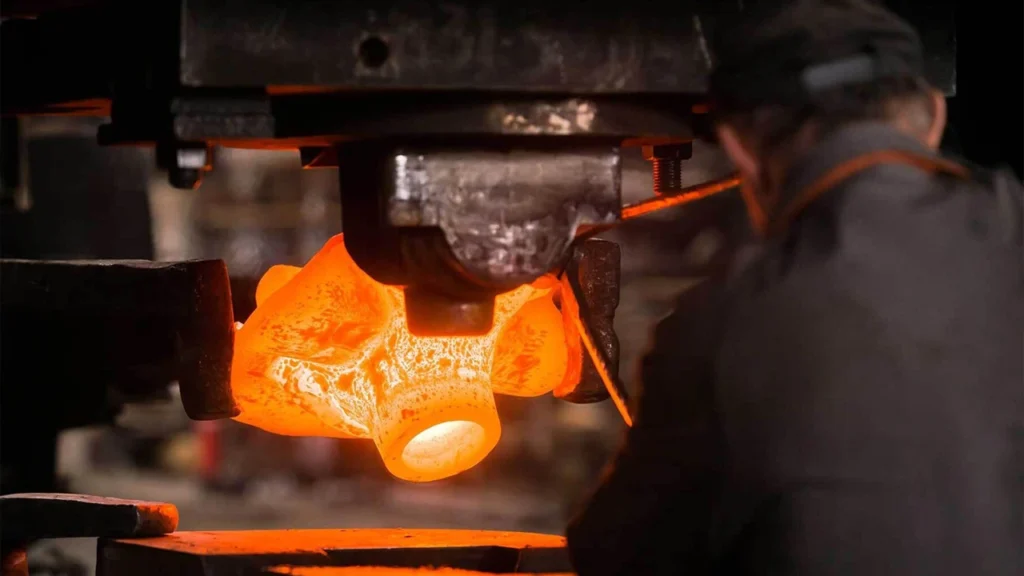
Advanced Technologies (e.g., Laser, CNC, 3D Printing)
Advanced manufacturing technologies include precision tools and digitally driven systems. CNC (Computer Numerical Control), laser cutting, waterjet machining, and additive manufacturing represent a shift toward automation and digital integration. These methods offer high precision and design flexibility.
Advantages
- Unmatched precision and repeatability
- Compatible with digital manufacturing systems
- Ideal for both prototyping and production
Disadvantages
- Higher capital investment
- Requires technical expertise for operation and maintenance
- Some methods have slower cycle times
Applications
- Laser-cut sheet metal for electronics
- CNC-milled molds and dies
- 3D-printed aerospace and medical components
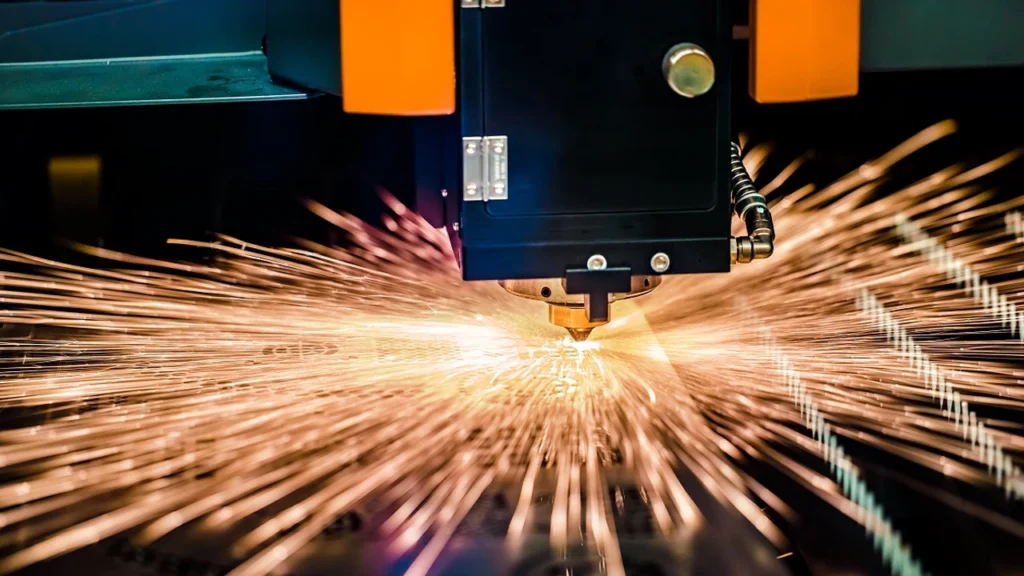
Key Manufacturing Strategies and Models
Manufacturing isn’t just about how products are made—it’s also about how production is planned, scheduled, and aligned with customer demand. Manufacturing strategies guide how businesses manage inventory, production flow, cost structures, and customization. These models help companies optimize efficiency, meet delivery timelines, and stay competitive in volatile markets. Choosing the right strategy depends on multiple factors: product variety, order frequency, lead time expectations, and production capacity.
Below are the most widely adopted manufacturing strategies and models used across industrial sectors.
Make-to-Stock (MTS)
The make-to-stock model relies on forecasting demand and producing goods in advance. Finished products are stored in inventory until customer orders arrive. This approach is most effective when product demand is stable and predictable.
Advantages
- Short delivery times due to pre-built inventory
- Economies of scale in production and purchasing
- Simplified scheduling and operations
Disadvantages
- Risk of overproduction or obsolete stock
- Forecasting errors can cause waste or shortages
- Requires significant storage space and cost
Applications
- Consumer electronics
- Packaged goods and spare parts
- Fast-moving industrial components
Make-to-Order (MTO)
In the make-to-order strategy, production begins only after a customer order is received. This approach minimizes inventory costs and allows for a high level of customization, making it ideal for low-to-medium volume production with variable specifications.
Advantages
- Reduced inventory holding costs
- Greater flexibility in customization
- Less risk of unsold finished goods
Disadvantages
- Longer lead times for delivery
- Requires highly responsive production planning
- Not suitable for time-sensitive bulk orders
Applications
- Custom CNC parts
- Industrial machinery
- Precision tools for medical and aerospace use
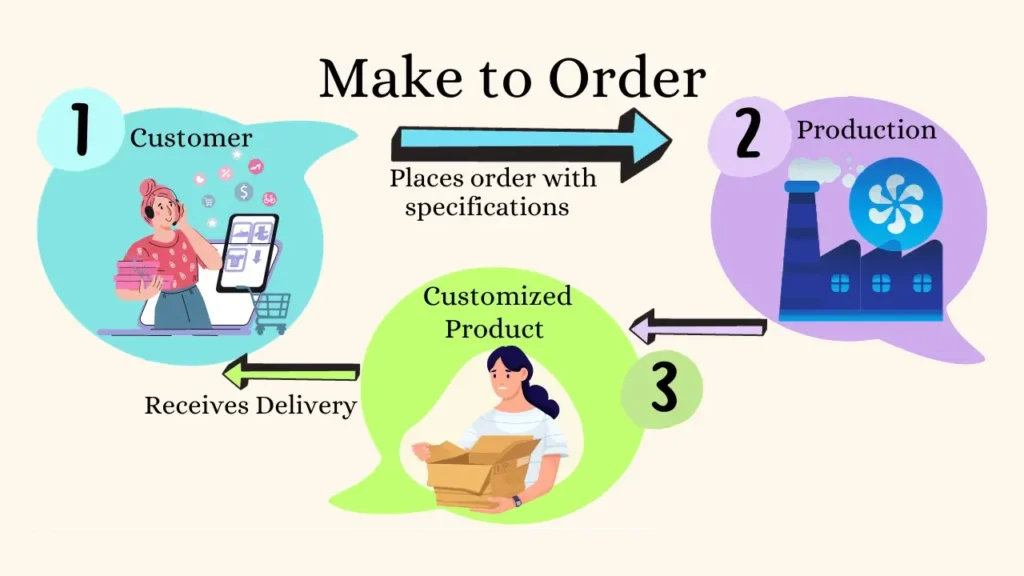
Engineer-to-Order (ETO)
Engineer-to-order is the most complex strategy, involving full customization from design to delivery. Products are developed based on unique client specifications and often require engineering input before manufacturing begins.
Advantages
- Complete design flexibility
- Ideal for highly technical or unique applications
- Promotes deep client engagement and long-term value
Disadvantages
- Long lead times and high engineering cost
- Requires deep cross-functional coordination
- Difficult to scale or automate at high volume
Applications
- Specialized automation systems
- Custom industrial CNC equipment
- Structural components for infrastructure or shipbuilding
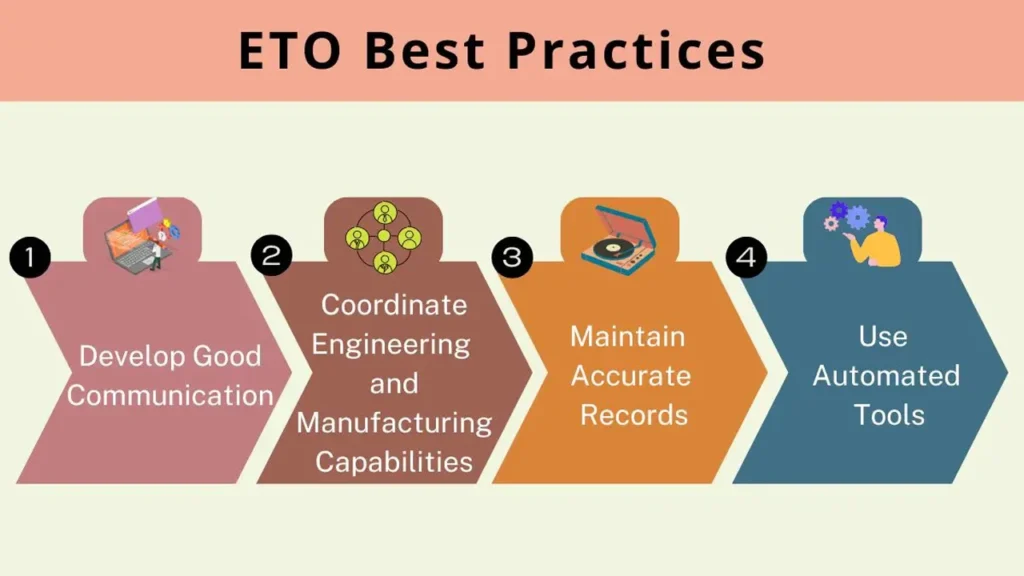
Lean Manufacturing
Lean manufacturing is a philosophy and strategy focused on eliminating waste, improving flow, and maximizing customer value. Originating from the Toyota Production System, it uses tools like value stream mapping, continuous improvement (Kaizen), and just-in-time inventory.
Advantages
- Reduces cost by eliminating non-value activities
- Improves process efficiency and quality
- Encourages employee involvement and problem-solving
Disadvantages
- Implementation requires cultural and operational change
- Less effective in highly variable demand environments
- Can increase supply chain risk if buffers are removed
Applications
- High-volume, standardized production environments
- Automotive and electronics assembly
- CNC-based production lines with lean cells
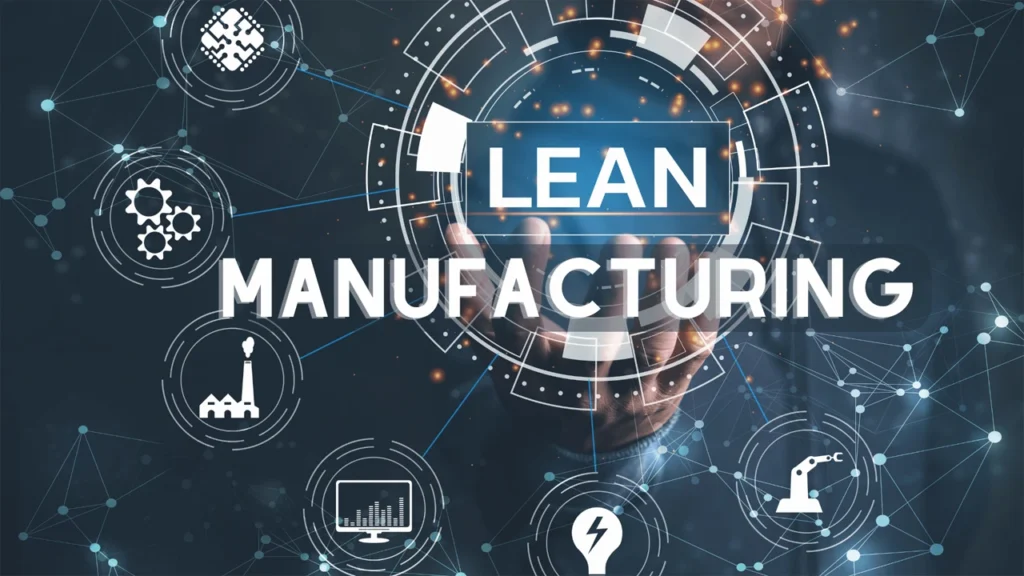
Just-in-Time (JIT)
Closely related to lean manufacturing, just-in-time production focuses on delivering materials and components exactly when needed—no earlier, no later. It requires tight coordination across suppliers, production, and delivery.
Advantages
- Minimizes inventory and warehousing costs
- Enhances workflow visibility and accountability
- Reduces waste and improves responsiveness
Disadvantages
- Vulnerable to supply chain disruptions
- Demands precise planning and real-time tracking
- Not ideal in regions with inconsistent logistics
Applications
- Automotive parts manufacturing
- Computer assembly and electronics
- CNC machining lines with synchronized operations
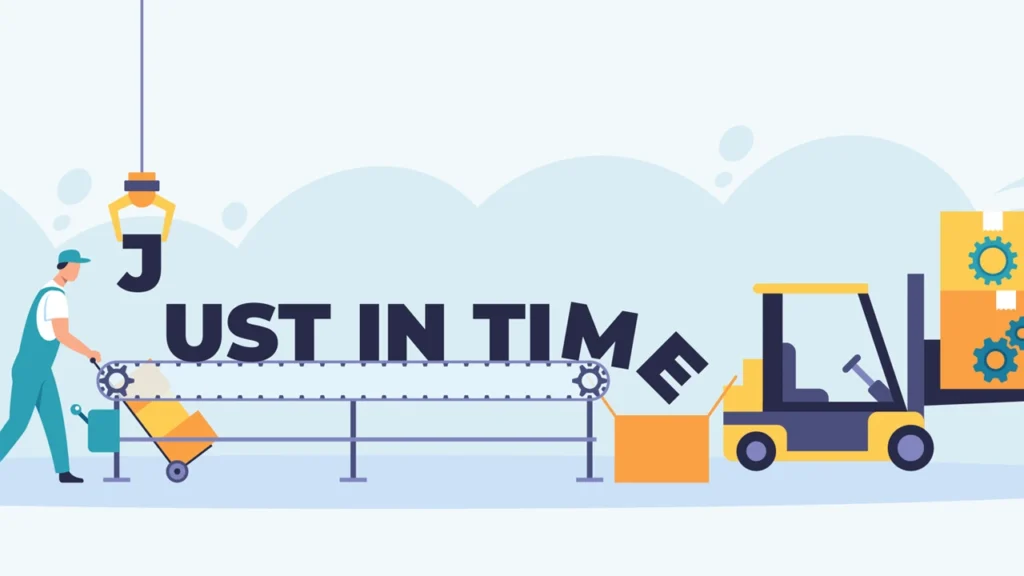
Major Manufacturing Industries
Different industries apply manufacturing principles in vastly different ways, depending on product complexity, regulatory requirements, and production volume. From aerospace to electronics, the needs of each sector influence not just what is manufactured, but how it’s manufactured. Understanding these sector-specific demands is critical when evaluating production strategies, investment in machinery, or technological upgrades.
Below is a breakdown of key industries that heavily rely on manufacturing, each with its own set of priorities, challenges, and production characteristics.
Automotive Industry
The automotive sector is one of the most mature and volume-driven manufacturing industries. It combines both repetitive and discrete manufacturing processes to produce vehicles, powertrains, and thousands of subcomponents. High levels of automation, robotics, and just-in-time systems are standard.
Industry Characteristics
- Requires tight tolerances and high throughput
- Heavy investment in robotic welding, stamping, and CNC machining
- Lean production and global supply chain coordination are essential
Common Products
- Engine blocks, gear systems, brake assemblies
- Interior and exterior plastic components
- Electronic control units and wire harnesses
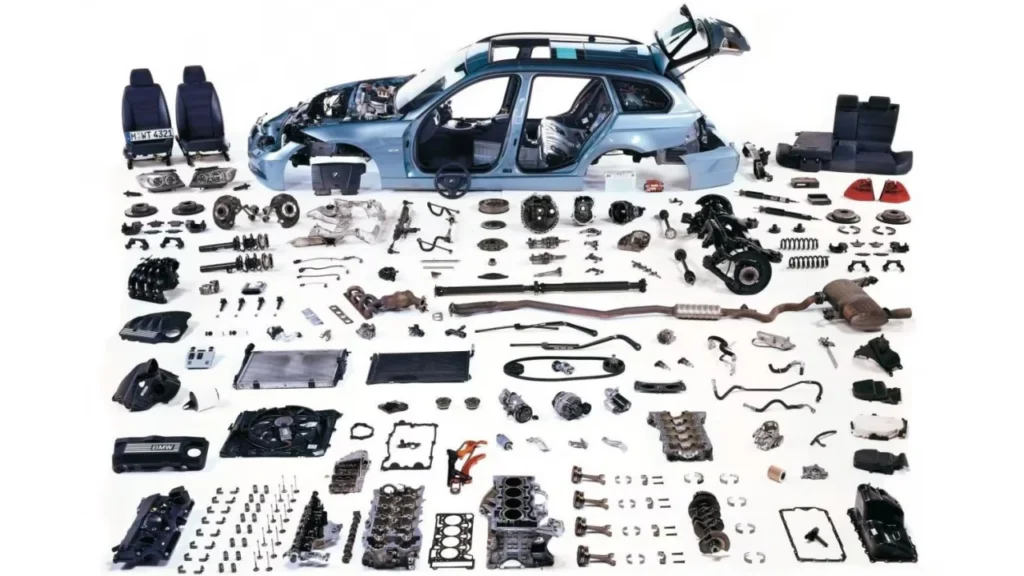
Aerospace and Defense
Aerospace manufacturing demands extreme precision, certification, and material performance. Components must meet stringent safety standards and are often produced in low volumes but with high complexity.
Industry Characteristics
- Extensive use of high-strength, lightweight materials (titanium, composites)
- Reliance on multi-axis CNC machining and additive manufacturing
- Long lead times and design validation cycles
Common Products
- Turbine blades and structural fuselage parts
- Custom brackets, air ducts, and cabin hardware
- Electronic avionics systems
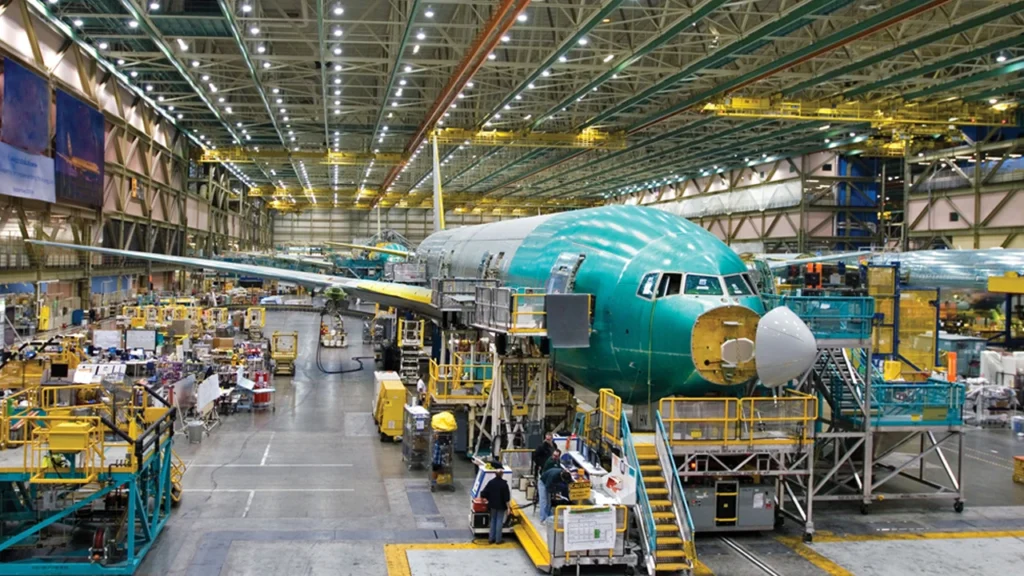
Medical Device Manufacturing
In the medical sector, manufacturing focuses on biocompatibility, precision, and compliance with health regulations. Cleanroom conditions and traceability are often required.
Industry Characteristics
- Small-scale, high-value production
- Materials must be sterilizable and body-safe
- Quality assurance is deeply embedded in every step
Common Products
- Orthopedic implants and surgical tools
- Dental prosthetics and diagnostic equipment housings
- Implantable electronic devices (e.g., pacemakers)
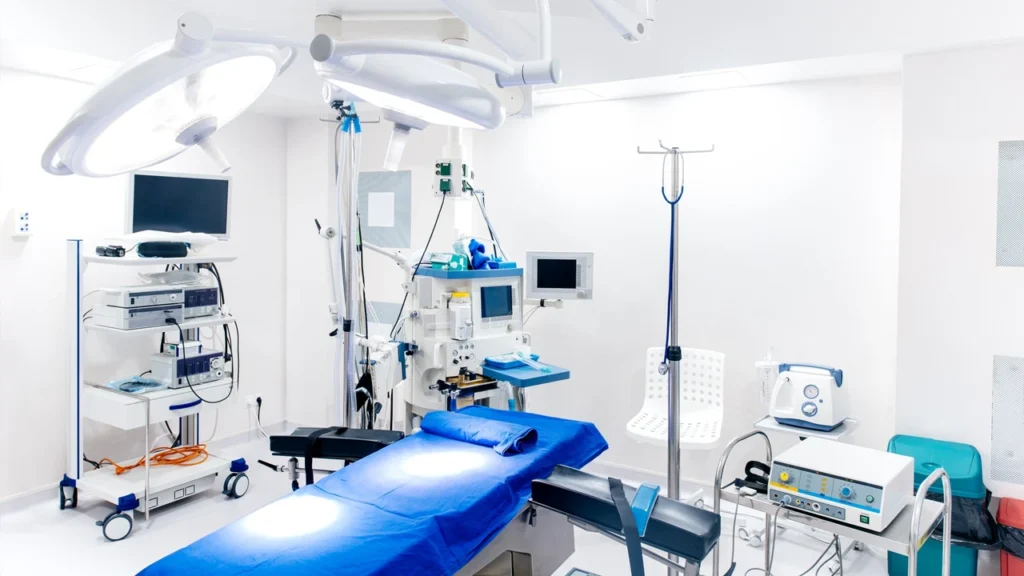
Electronics & Semiconductors
This industry relies on process manufacturing and automated micro-assembly. Products require ultra-clean environments and nanometer-level precision.
Industry Characteristics
- High-volume output with frequent product updates
- Demands cleanroom facilities and ESD control
- Highly sensitive to global supply chain shocks
Common Products
- Printed circuit boards (PCBs)
- Semiconductors, sensors, and chips
- Smartphone and laptop components
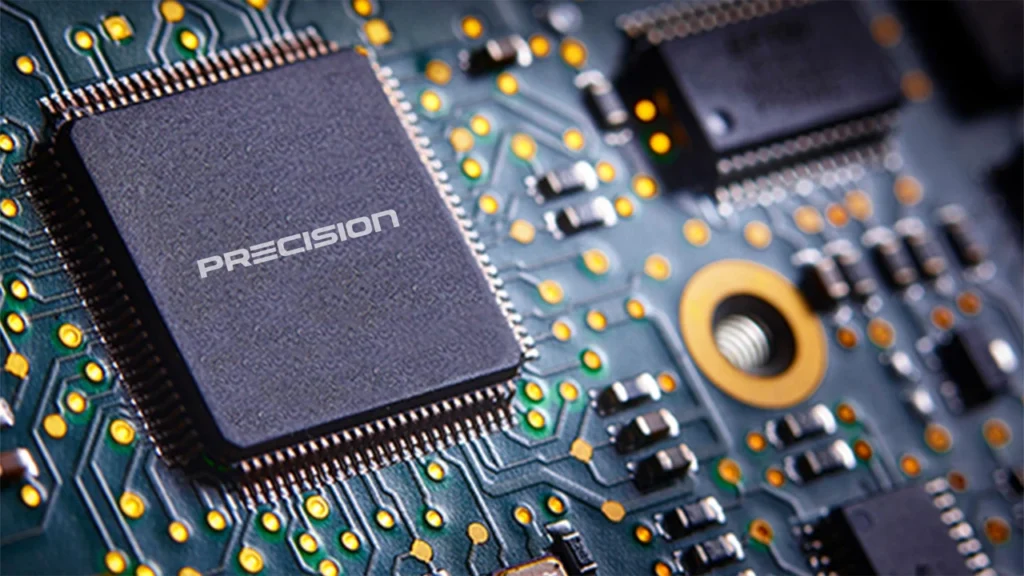
Industrial Machinery
The industrial equipment sector manufactures complex, durable machines for construction, energy, food processing, and manufacturing itself—including CNC machines and automation systems.
Industry Characteristics
- Large-scale components with long service lives
- Often custom-configured for specific use cases
- Integration of mechanical, hydraulic, and electronic systems
Common Products
- CNC machining centers and vertical lathes
- Gearboxes, pumps, and compressors
- Packaging machines and robotic arms
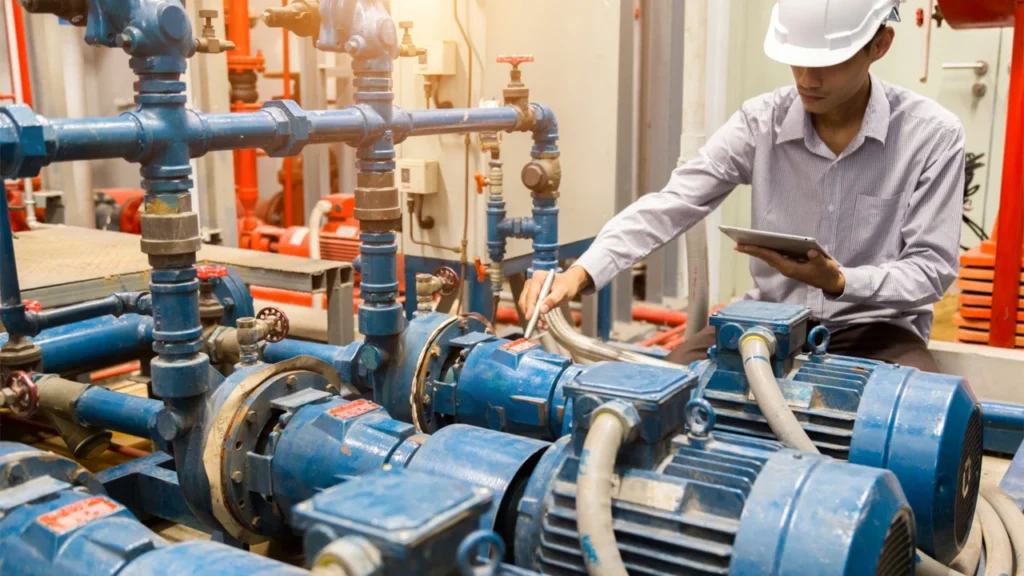
The Manufacturing Process: Step by Step
While manufacturing encompasses a wide range of technologies and strategies, every production effort follows a logical sequence of steps. These steps transform raw ideas into finished, usable products through a structured, repeatable workflow. Each stage in the manufacturing process plays a critical role in ensuring quality, efficiency, and cost control — from early design to final delivery.
Understanding this step-by-step approach helps manufacturers optimize operations, reduce errors, and improve time-to-market performance.
Product Design
Every manufactured product begins with a concept. The design phase translates customer needs, technical requirements, and compliance standards into detailed plans using CAD (Computer-Aided Design) tools. At this stage, teams define specifications, tolerances, materials, dimensions, and sometimes simulate mechanical performance. Design-for-manufacturability (DFM) is critical here—it ensures that the product is not just functional, but also feasible to produce efficiently with available resources and manufacturing technologies.
Material Selection
Selecting the right materials is fundamental to achieving desired product performance, durability, and cost targets. This decision impacts the production process, including what methods can be used (machining, casting, etc.), what tools are needed, and how the material responds to stress, temperature, or corrosion. Manufacturers must balance price, availability, and process compatibility—particularly in industries like aerospace or medical, where materials must meet strict standards.
Prototyping
Prototyping serves as a bridge between design and production. Engineers produce a limited number of test units to validate the concept, test tolerances, and identify any design flaws. Additive manufacturing (3D printing) or CNC machining are commonly used at this stage due to their flexibility and speed. This step allows teams to refine product features before committing to mass production, which can prevent costly errors downstream in the manufacturing process flow.
Production and Quality Control
Once the design and prototype are approved, full-scale production begins. Here, the product moves through a sequence of processes—machining, molding, assembly, or joining—depending on its design and material requirements. Each station in the production line adds value and moves the part closer to completion. Simultaneously, quality control measures like in-process inspection, statistical analysis, and automated checks ensure that every part meets the specified tolerances and functional requirements.
Packaging and Distribution
The final step involves preparing finished goods for shipment and use. Packaging protects products from physical damage, environmental exposure, and contamination during transit. It may also include labeling, documentation, and compliance marking. From here, the product enters the supply chain for distribution to end users, retailers, or integration into larger systems.
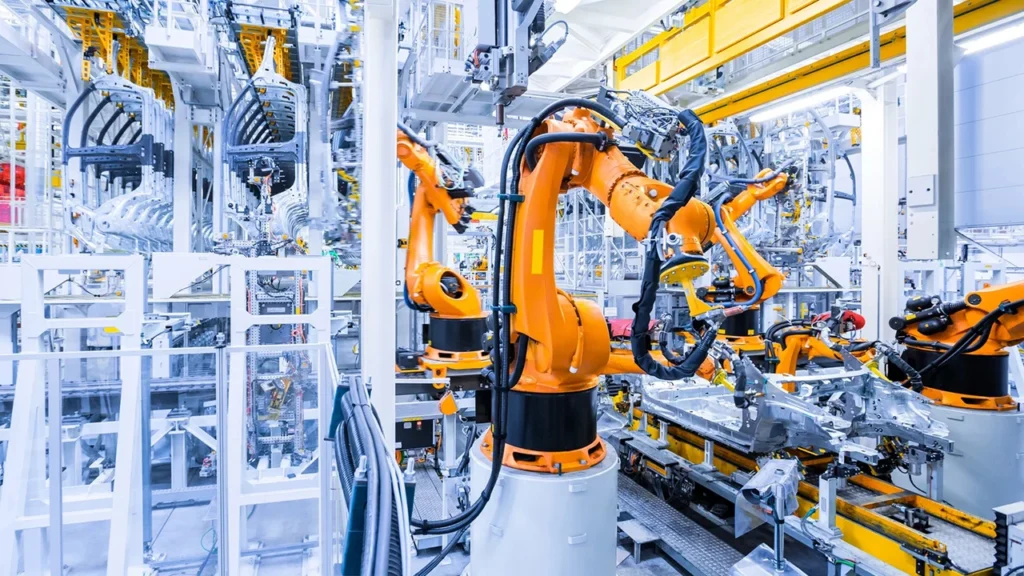
Advantages and Disadvantages of the Manufacturing Industry
Like any industrial discipline, manufacturing offers both significant benefits and real-world challenges. It serves as the foundation for economic growth, product innovation, and technological development—but it also involves cost pressures, environmental considerations, and operational risks. Understanding both sides is essential for business leaders, engineers, and policymakers aiming to maximize efficiency while minimizing downsides.
Advantages
One of the most powerful benefits of manufacturing is economic value creation. Manufacturing not only produces finished goods but also generates employment, stimulates innovation, and supports auxiliary industries such as logistics, tooling, and raw material supply. For industrialized nations, it remains a key engine of GDP.
Another major strength is scalability. Once processes are optimized, manufacturers can produce goods at high volume with consistency and precision—especially when using CNC systems or automation. This scalability allows companies to meet growing demand while controlling per-unit cost.
Manufacturing also enables product customization through flexible methods like additive manufacturing and small-batch CNC machining. Companies can respond to niche markets or client-specific requests without major retooling.
In addition, the evolution of smart manufacturing and Industry 4.0 technologies has led to improved traceability, predictive maintenance, and reduced waste—enhancing sustainability and operational transparency.
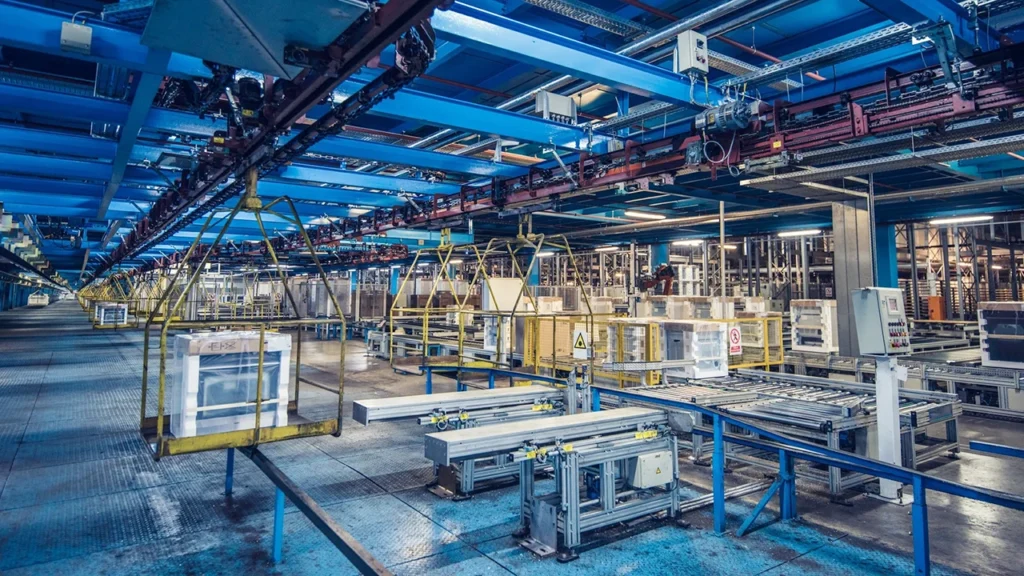
Disadvantages
Despite its benefits, manufacturing presents notable drawbacks. One key concern is capital intensity—setting up production lines, purchasing equipment, and maintaining facilities require substantial upfront investment. Small and medium enterprises may struggle to compete with larger players on cost and scale.
Another challenge is supply chain dependency. Many manufacturing systems rely on global suppliers for raw materials or subcomponents. Disruptions—from geopolitical tensions to shipping delays—can halt production and inflate costs.
Environmental impact is also a growing concern. While many manufacturers are moving toward greener practices, traditional production still involves energy consumption, emissions, and waste. Regulatory compliance and sustainability goals add pressure to adapt.
Additionally, labor challenges—including shortages of skilled workers, training needs, and labor costs—pose strategic risks. As processes become more digitized, the skills gap between legacy workers and smart factory systems continues to widen.
Key Risks in the Manufacturing Sector
While manufacturing powers industries across the globe, it also faces a complex array of operational and strategic risks. These risks can disrupt production, damage reputation, inflate costs, and hinder long-term growth. As technologies evolve and global markets shift, manufacturers must proactively address these vulnerabilities through resilient systems, intelligent planning, and continuous improvement.
Below are four of the most pressing risks affecting the manufacturing sector today.
Global Supply Chain Disruptions
In an increasingly interconnected world, manufacturing supply chains span continents. This global reach introduces vulnerability to events like geopolitical conflict, port congestion, pandemics, and raw material shortages. A delay in a single component—whether it’s steel from Asia or semiconductors from Europe—can stall entire production lines.
Recent disruptions in container shipping and microchip availability have exposed how fragile these supply webs can be. Manufacturers relying on just-in-time delivery or single-source suppliers face amplified risk. Diversified sourcing, localized inventory buffers, and transparent logistics systems have become crucial strategies for mitigating this issue.

Equipment Failures and Downtime
Unexpected equipment breakdowns remain a major threat to manufacturing operations. Downtime doesn’t just halt production—it can lead to scrap, missed deadlines, overtime costs, and damage to client relationships. As production systems become more automated, the stakes of machinery reliability only increase.
Preventive and predictive maintenance strategies can reduce unplanned downtime, but many operations still rely on reactive responses. Upgrading equipment with real-time monitoring tools and diagnostic-friendly controls can significantly improve uptime and process stability.
Skilled Labor Shortages
The skills gap in manufacturing is a long-term structural issue. As experienced technicians retire, many companies struggle to find qualified replacements—especially for roles involving CNC machining, process setup, or multi-axis programming. Emerging technologies widen the gap further, requiring both mechanical knowledge and digital fluency.
Without trained personnel, even the most advanced machines can sit idle. This directly impacts productivity, safety, and quality. Investment in training programs, ergonomic interfaces, and simplified operation platforms can ease onboarding and bridge the skills divide.
Cybersecurity Threats in Smart Manufacturing
As factories become more digitized, they also become more vulnerable to cyberattacks. From ransomware targeting plant control systems to IP theft from insecure cloud platforms, the manufacturing sector is now a prime target for malicious actors. Any compromise can lead to halted operations, corrupted data, or even safety hazards.
Smart manufacturing environments that rely on IoT, cloud dashboards, and remote access must enforce robust network segmentation, encrypted protocols, and strict access control policies. Cybersecurity is no longer optional—it’s now part of the core manufacturing infrastructure.

Challenges Facing Manufacturers Today
Modern manufacturers operate in a business environment that is more dynamic—and more demanding—than ever before. From shifting global regulations to rising operational costs, companies must navigate a complex landscape while maintaining production efficiency and competitive pricing. These challenges are not just technical; they are strategic, economic, and often deeply structural.
Below are the key challenges that most manufacturers encounter in today’s industrial environment.
Rising Energy and Material Costs
Manufacturing is energy-intensive by nature. Whether powering CNC machines, heat treatment lines, or ventilation systems, factories require a steady and affordable energy supply. However, global energy volatility—driven by geopolitical shifts, carbon pricing, and raw material scarcity—has pushed costs upward.
Similarly, prices for key inputs such as steel, copper, aluminum, and resins continue to fluctuate, disrupting production budgets and long-term procurement contracts. This has forced manufacturers to rethink sourcing strategies, seek local alternatives, and improve energy efficiency through automation and lean system design.
Environmental Regulations and ESG Compliance
Environmental, Social, and Governance (ESG) standards are no longer optional. Governments and investors increasingly demand traceability, reduced carbon footprints, and circular economy initiatives within the manufacturing process. For example, regulations around emissions, water usage, and waste handling are tightening across Europe, Asia, and the Americas.
For manufacturers, this means adapting not only equipment and supply chains but also documentation and audit readiness. Transitioning to low-impact production methods—such as high-efficiency machining or process optimization—is often costly and time-consuming, especially for smaller firms.
Digital Transformation Pressure
Smart manufacturing, IoT, and cloud-integrated control systems have introduced unprecedented efficiencies—but also pressure to keep up. Companies unable to implement digital tools may fall behind in areas like predictive maintenance, remote monitoring, and real-time analytics. The adoption of technologies like AI-driven process optimization or digital twins is rapidly becoming an industry standard.
The challenge lies not just in investment, but in integration. Aligning legacy machinery with modern platforms, training workers, and ensuring cybersecurity all add complexity to digital transformation in manufacturing environments.
Market Volatility and Customer Expectations
Customer demand in many sectors—especially automotive, medical, and electronics—is no longer linear or predictable. Mass customization, shortened product lifecycles, and sudden shifts in global consumption patterns create constant demand variability.
Manufacturers must adapt by offering more flexible production systems, scalable batch sizes, and rapid changeover capabilities. At the same time, price competition remains fierce, making it difficult to pass on increased costs to buyers.
Talent Acquisition and Retention
The manufacturing industry faces a generational shift. As older, skilled technicians retire, attracting younger workers into the field has proven difficult. Manufacturing is often perceived as outdated or labor-intensive, despite its high-tech evolution.
In high-precision environments like CNC machining or additive manufacturing, the lack of skilled operators directly affects output quality and machine utilization rates. Companies must invest in training, workplace modernization, and employer branding to secure long-term talent pipelines.
Critical Factors for Successful Manufacturing
In the fast-paced world of modern industry, success in manufacturing depends on far more than simply having the right equipment. Manufacturers must balance performance, reliability, flexibility, and cost-efficiency to maintain competitiveness and meet increasing demands for quality and speed. Understanding the critical factors that drive manufacturing performance can help decision-makers evaluate systems, workflows, and investments with greater confidence.
The following elements consistently distinguish successful manufacturing operations across sectors.
Precision and Tolerance Control
Precision is the foundation of modern manufacturing—especially in industries such as aerospace, medical devices, and electronics. Maintaining tight tolerances ensures that components function reliably, assemble correctly, and meet stringent safety or regulatory standards. As designs become more complex and miniaturized, the manufacturing process must be capable of consistently producing parts within micron-level deviations.
Investments in high-performance tooling, stable machining environments, and digital inspection systems are key to achieving and maintaining this level of accuracy.
Flexibility and Customization Capability
Market expectations are shifting away from mass uniformity and toward adaptable, customized products. Manufacturers that can switch between product variants without major downtime or retooling gain a strategic edge. Flexible setups—such as modular fixturing, multi-axis machining, and software-driven changeovers—enable quick response to shifting demand while preserving workflow efficiency.
This level of manufacturing flexibility supports make-to-order and engineer-to-order models without sacrificing throughput.
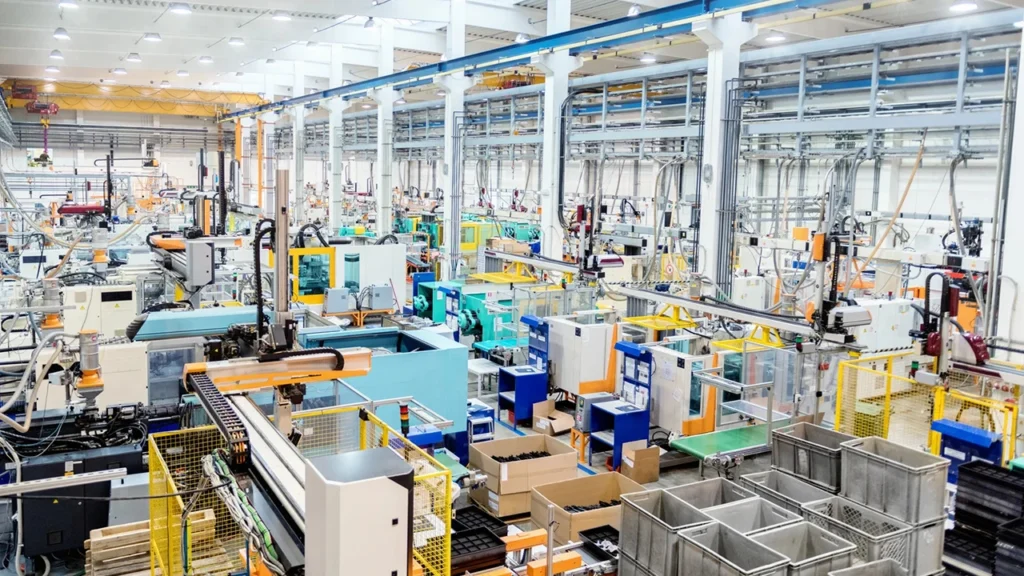
Production Throughput and Cycle Time
Efficient manufacturing production isn’t just about making good parts—it’s about making them at the right speed. High throughput with low cycle time enables companies to meet deadlines, reduce backlogs, and manage resources effectively. However, pushing for speed must not compromise quality or machine longevity.
Optimizing tool paths, automating repetitive operations, and minimizing non-cutting time are all ways to maximize production throughput without introducing risk.
Equipment Uptime and Reliability
Downtime is one of the most expensive issues in any production environment. Machines that are frequently out of service due to maintenance or failure reduce profitability and strain delivery schedules. Reliable equipment with well-planned preventive maintenance protocols supports consistent output and protects against workflow interruptions.
Incorporating sensors, condition monitoring, and maintenance logs into daily operations can significantly improve manufacturing system uptime and predict issues before they escalate.
Energy Efficiency and Operating Costs
As energy prices rise and sustainability expectations increase, manufacturers must evaluate the operating costs of their processes—not just at purchase, but across the full equipment lifecycle. Energy-efficient motors, regenerative braking systems, and optimized process paths reduce power consumption without impacting performance.
Understanding total cost of ownership—including energy, maintenance, and material waste—is essential for long-term profitability in any manufacturing business.

Understanding Manufacturing Costs
Controlling costs is one of the most critical aspects of running a successful manufacturing operation. However, cost in manufacturing goes far beyond the upfront price of machines or materials. It involves a comprehensive view of both direct and indirect expenses, as well as an understanding of long-term operational impacts. For procurement managers, engineers, and financial planners, mastering these cost structures is essential to optimizing return on investment (ROI).
Let’s break down what manufacturing costs truly include and how they shape decision-making in industrial environments.
Direct Costs
Direct costs are those that can be traced specifically to the production of a product. These include:
- Raw materials used in forming or machining a component
- Direct labor—operators, technicians, and quality control staff involved in production
- Tooling and consumables, such as cutters, inserts, and coolant
In high-volume environments, these costs scale linearly with output. For job shops or small-batch manufacturers, they may fluctuate more, depending on setup times and order complexity. Tracking direct costs accurately is vital for quoting, profitability analysis, and process optimization.
Indirect Costs
Indirect costs are not tied to a single unit of production but are necessary for the overall operation of the facility. These include:
- Facility overhead—lighting, rent, HVAC, and utilities
- Maintenance and equipment depreciation
- Administrative functions—scheduling, IT systems, and compliance
Many of these costs are stable over time, meaning manufacturers aim to dilute them by increasing production throughput or improving efficiency. Understanding how indirect costs impact unit economics is especially important when scaling up production or investing in new capacity.
Total Cost of Ownership (TCO)
TCO refers to the entire financial impact of a manufacturing system over its lifecycle. It includes purchase price, installation, energy consumption, maintenance, training, and even end-of-life disposal. In many cases, a machine with a higher upfront cost may offer better TCO by delivering longer uptime, fewer defects, or lower energy usage.
Buyers focused on manufacturing efficiency look at TCO rather than just initial cost. This mindset helps reduce surprises over time and supports long-term operational sustainability.
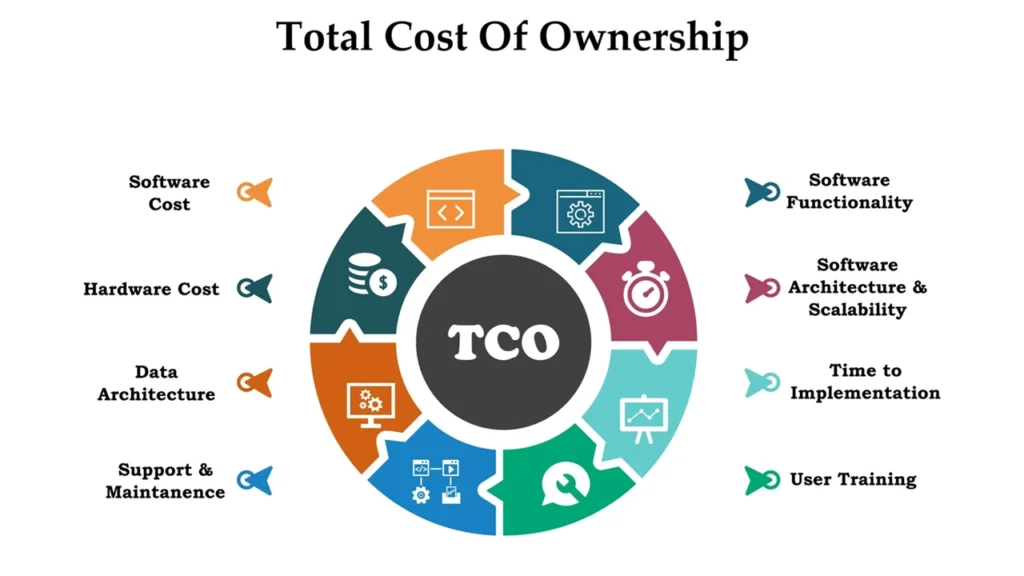
Cost Optimization Strategies
Effective cost control in manufacturing doesn’t rely on one action, but on a system-wide approach:
- Lean production methods reduce waste and non-value activities
- Preventive maintenance minimizes unexpected repair costs and downtime
- Process standardization ensures consistent quality with fewer reworks
- Energy audits help identify high-cost operations and suggest improvements
By identifying and addressing cost drivers at every level of the manufacturing process, organizations can preserve margins and remain competitive in volatile markets.
Future Trends in Manufacturing
Manufacturing is evolving rapidly in response to technological innovation, environmental demands, and changing consumer expectations. Companies that fail to adapt risk falling behind in cost, capability, and relevance. From digitalization to sustainable practices, the future of manufacturing will be defined by adaptability, intelligence, and automation. Understanding these shifts helps industry leaders make informed investments and position their businesses for long-term success.
Here are the most significant trends reshaping the global manufacturing landscape.
Smart Manufacturing and Industry 4.0
Smart manufacturing refers to the integration of cyber-physical systems, sensors, and real-time data analytics into the manufacturing process. It enables machines to communicate, adjust to process variables, and make autonomous decisions based on feedback loops.
Industry 4.0, the broader framework behind this shift, also includes technologies like artificial intelligence (AI), machine learning, and cloud computing. These tools enhance visibility across production systems, allowing manufacturers to optimize throughput, reduce downtime, and gain deeper insights into operational performance.

Automation, Robotics, and AI Integration
The role of automation in manufacturing continues to grow. From robotic arms in assembly lines to automated tool changers in CNC systems, automation enhances consistency, reduces error rates, and lowers reliance on manual labor.
AI is now being used to predict machine failures, adjust process parameters in real time, and optimize production schedules. Combined with robotics, it allows for fully automated cells capable of running lights-out operations—manufacturing processes that require minimal human oversight.
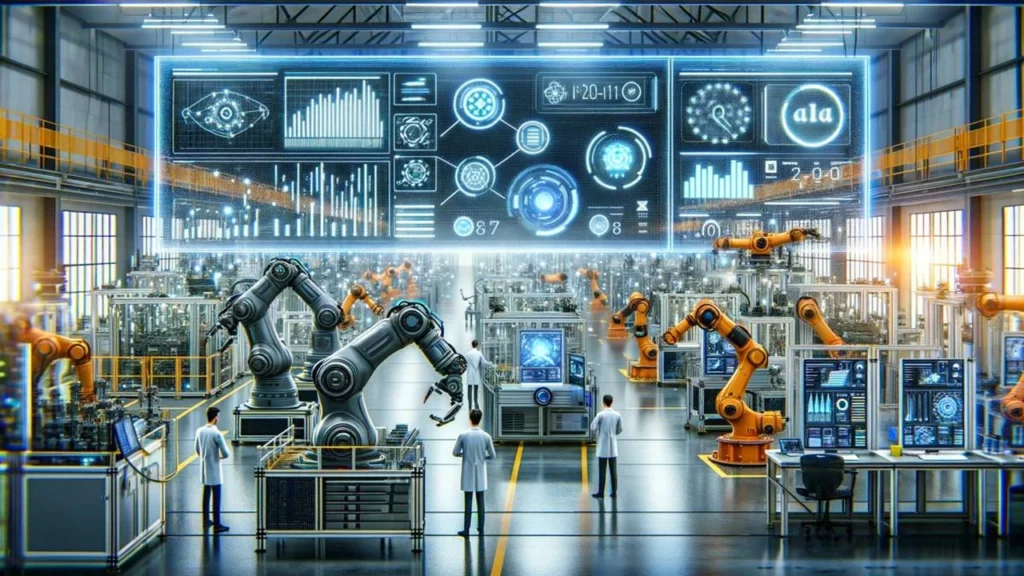
Sustainability and Green Manufacturing
Environmental concerns are increasingly central to industrial planning. Green manufacturing focuses on reducing waste, energy consumption, and carbon emissions throughout the product lifecycle. This includes switching to renewable energy sources, using recyclable materials, and designing for disassembly.
Lifecycle analysis (LCA) is becoming a standard tool to evaluate the environmental footprint of production. Manufacturers are now expected to demonstrate sustainability not only in product design but also in supply chains, facility operations, and packaging strategies.
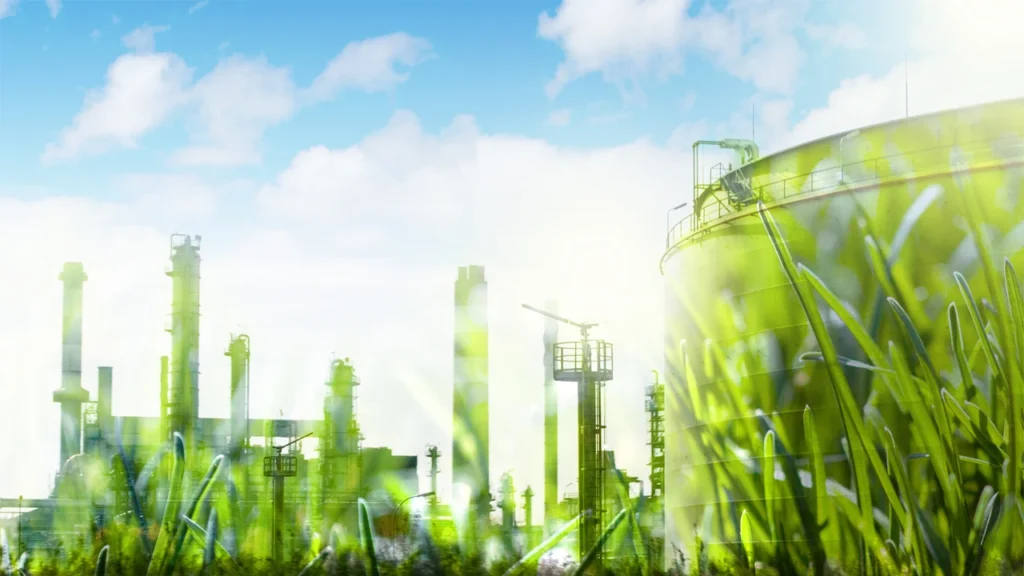
Digital Twins and Virtual Prototyping
Digital twins are virtual replicas of physical systems—machines, production lines, or even entire factories. These models are updated in real time using sensor data and simulations, allowing manufacturers to test scenarios, forecast failures, and optimize layouts without interrupting actual operations.
Virtual prototyping, closely related, enables engineers to test product performance digitally before committing to tooling or material purchases. This drastically reduces development time and cost, especially in precision-driven industries like aerospace or medical device manufacturing.

On-Demand and Decentralized Production
With the rise of 3D printing, modular manufacturing cells, and cloud-based platforms, production is becoming more decentralized. Manufacturers can now produce goods closer to the point of consumption, reducing logistics costs and lead times.
On-demand manufacturing also allows for smaller batch sizes and faster turnaround, making it ideal for customized products and industries with fluctuating demand. As global logistics become more volatile, decentralized models offer greater resilience.
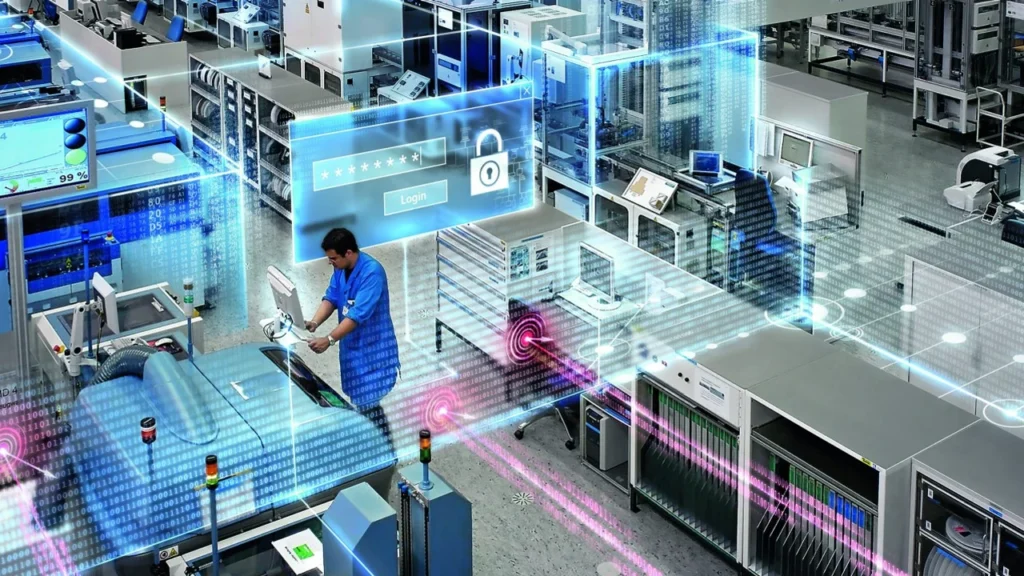
Conclusion
Manufacturing remains one of the most essential pillars of global industry. From its origins in craft production to its current state of smart factories and digital ecosystems, the manufacturing sector has continuously adapted to meet the needs of modern society. Today’s manufacturers must navigate a complex landscape—balancing cost, precision, flexibility, and sustainability—while embracing technologies that are reshaping the production process itself.
Success in this evolving environment demands more than just tools or machines. It requires systems that deliver uptime, accuracy, and agility at scale. That’s why the future of manufacturing depends so heavily on advanced, high-performance equipment—especially in fields like CNC machining, where control and repeatability are everything.
As the industry moves forward, manufacturers will increasingly rely on partners who not only understand the demands of industrial production but also engineer solutions capable of meeting those demands with reliability and precision. For companies committed to scaling their operations with smarter, more efficient manufacturing technologies, working with machine providers who share this vision has never been more important.
As a company deeply rooted in the CNC machine tool industry, Rosnok understands what today’s manufacturers demand: precision, durability, and adaptability at scale. With decades of experience designing high-performance machining solutions for global industrial customers, we remain committed to supporting the manufacturing sector with the tools it needs to build smarter, faster, and more resilient production systems.
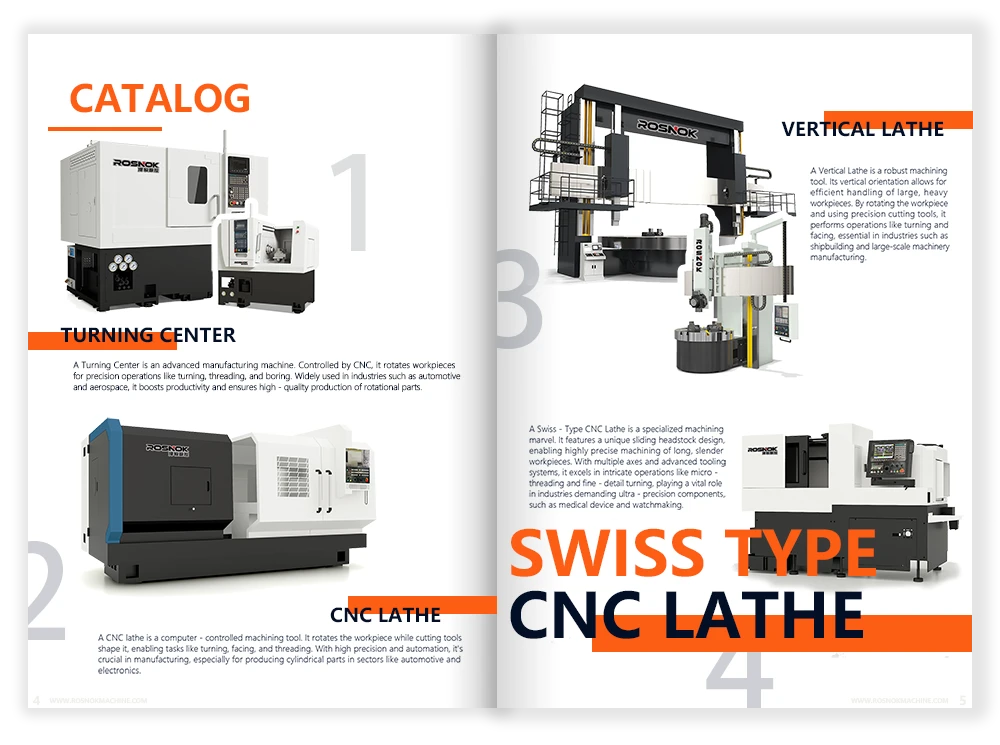
Frequently Asked Questions (FAQ)
What’s the difference between manufacturing and production?
While often used interchangeably, “manufacturing” typically refers to the mechanical or chemical transformation of raw materials into physical goods using labor, machines, and tools. “Production,” on the other hand, is a broader term that also includes non-physical outputs, such as software or services. In short, all manufacturing is production, but not all production involves manufacturing.
What is the most cost-effective manufacturing model for small businesses?
For small manufacturers, job shop manufacturing or make-to-order (MTO) strategies are usually the most cost-effective. These models reduce inventory risk, allow for customization, and avoid large capital investments in high-volume automation. While unit costs may be higher, overall resource utilization and cash flow management are often more favorable for small or startup operations.
How can manufacturers reduce energy consumption without affecting output?
Reducing energy use starts with process optimization. Manufacturers can analyze power loads during idle cycles, improve scheduling to avoid frequent machine restarts, and upgrade to high-efficiency motors or variable frequency drives (VFDs). Retrofitting older machines with modern controllers and using predictive maintenance systems also minimizes unnecessary energy loss while keeping productivity stable.
What are the signs that a manufacturer needs to upgrade their CNC equipment?
Common signs include:
- Increasing machine downtime due to part failures
- Difficulty sourcing spare parts or software updates
- Inconsistent accuracy or poor surface finish
- Inability to integrate with modern software or Industry 4.0 platforms
- Limited flexibility for handling new materials or complex geometries
If these issues impact throughput or quality, an equipment upgrade may yield immediate ROI through better uptime and tighter tolerances.
What certifications or standards matter most in industrial manufacturing?
Depending on the sector, key standards include:
- ISO 9001 – Quality management systems
- CE Marking – European product conformity
- TÜV / UL / CSA – Electrical and safety certifications
- RoHS / REACH – Environmental and chemical compliance
- ISO 13485 – Medical device manufacturing
Certifications help ensure that both products and processes meet global quality, safety, and compliance requirements—especially for exporters.


